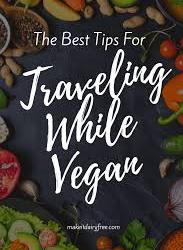#Eco-Friendly Reusable Water Bottles
Explore tagged Tumblr posts
Text

How Eagle Single Wall Stainless Steel Bottles Can Ensure A Sustainable Summer?
Ensure a sustainable summer with Eagle Single Wall Stainless Steel Bottles. Reduce plastic waste, prevent toxins, and make eco-friendly choices.
#BPA-Free Stainless Steel Bottles#Eco-Friendly Reusable Water Bottles#Reduce Plastic Waste With Eagle Bottle#Single Wall Bottle In India#Single-Wall Bottles Manufacturers#Single-Wall Bottles Supplier
0 notes
Text
#water bottle#water bottles#reusable water bottles#thermal water bottles#stainless steel water bottles#insulated water bottles#leak-proof water bottles#bpa-free water bottles#double-walled water bottles#eco-friendly water bottles#vacuum insulated water bottles#custom water bottles#best water bottles#portable water bottles#hydration bottles#stainless steel insulated bottles#reusable thermal bottles
0 notes
Text
Enhance sustainability with our Eco-Friendly Combo Pack. Thoughtfully curated for the environmentally conscious consumer. This combo includes a stylish dairy made from recycled paper, a reusable water bottle crafted from eco-friendly materials, and a biodegradable pen. Ideal for students, professionals, or anyone looking to make a positive impact. Each item is designed to reduce waste and promote a greener lifestyle, making it the perfect choice for those who care about the planet.
0 notes
Note
Liquid Death is a brand that carries regular water, and flavored water. Plus it is in metal cans so no plastic.
That's pretty cool! Definitely a good alternative to plastic.
#definitely a cool option and aluminum cans are way easier to recycle than plastic!#plastic degrades as it's recycled but aluminum doesn't#anyways not to get all eco friendly on the hydration blog but this is definitely an important thing to talk about!#the most eco friendly option is metal reusable water bottles but i know not everyone has access to clean tap water so this is another optio
1 note
·
View note
Text
10 plastic free summer essentials in your summer bag

View On WordPress
#bamboo cutlery#bamboo sunglasses#biodegradable wet wipes#eco-friendly beach accessories#eco-friendly beach toys#natural bug bite soother.#natural fiber beach mat#natural insect repellent#natural sunscreen#organic cotton towel#plastic-free summer essentials#recycled material beach bag#reusable water bottle#sustainable personal care#sustainable swimwear
0 notes
Text
that episode of we bare bears from 2015 when the bears get shamed for not being eco friendly and owning a reusable bag so they all get one and become addicted to the hype and acceptance and start buying a thousand totes ending up looking ridiculous and totally defeating the purpose of reducing waste

this is what idiots on tiktok who own 500 fancy reusable water bottles look like
477 notes
·
View notes
Text




Ways to practice eco-friendly living in your home
1. Reduce energy consumption:
- Install energy-efficient appliances and LED light bulbs.
- Turn off lights and unplug electronics when not in use.
- Use natural light as much as possible.
- Set your thermostat to a lower temperature in winter and higher in summer.
- Insulate your home properly to reduce heating and cooling needs.
2. Save water:
- Fix any leaks in faucets and toilets promptly.
- Install low-flow showerheads and faucets.
- Collect rainwater for watering plants.
- Only run the dishwasher and washing machine with full loads.
- Use a broom instead of a hose to clean outdoor spaces.
3. Practice waste reduction:
- Recycle paper, plastic, glass, and metal.
- Compost kitchen scraps and yard waste.
- Opt for reusable products instead of disposable ones (e.g., cloth napkins, rechargeable batteries).
- Avoid single-use plastics, such as plastic bags and water bottles.
- Use a reusable shopping bag.
4. Use eco-friendly cleaning products:
- Choose natural, non-toxic cleaning products or make your own using ingredients like vinegar, baking soda, and lemon juice.
- Avoid products containing harmful chemicals that can harm the environment and your health.
5. Grow your own food:
- Plant a garden to grow vegetables, fruits, and herbs.
- Use organic and natural fertilizers instead of synthetic ones.
- Compost food scraps to enrich the soil.
6. Opt for sustainable materials:
- Choose furniture made from sustainable materials like bamboo or reclaimed wood.
- Use eco-friendly flooring options like bamboo, cork, or reclaimed hardwood.
- Select paint and other finishes that have low or no volatile organic compounds (VOCs).
7. Reduce plastic waste in the kitchen:
- Use glass or stainless-steel containers for food storage instead of plastic.
- Replace plastic wrap with beeswax wraps or reusable silicone covers.
- Use refillable water bottles and avoid buying bottled water.
8. Conserve energy in the kitchen:
- Use energy-efficient appliances.
- Cook with lids on pots and pans to retain heat and reduce cooking time.
- Opt for smaller appliances like toaster ovens instead of full-sized ovens when possible.
9. Encourage sustainable transportation:
- Use public transportation, walk, or bike whenever possible.
- Carpool or arrange a car-sharing service with neighbors or colleagues.
- Transition to an electric or hybrid vehicle if feasible.
10. Educate and involve your family:
- Teach your family about the importance of eco-friendly practices and involve them in the decision-making process.
- Encourage everyone to adopt sustainable habits and lead by example.
- Discuss environmental issues and brainstorm new ideas for greener living.
#home improvement#work from home#make money from home#homebrew#ecology#ecofriendly#sustainability#home design#home#acne treatment#homedesign#homemade#home decor#home business#home & lifestyle#homestuck#welcome home#homens de sunga#homeinterior#homestyle#cozyplaces#cozy glow#cozyhome#cozy cozy#cozy living#cozyvibes#cozy autumn#cozy fall#cozy mystery#cozycore
88 notes
·
View notes
Note
Shabbat Shalom!
A bit more trans jewish joy for your inbox, top surgery has been completed with no complications! The nurse who did my IV and prep was absolutely amazing, probably one of the best nurses I’ve had in general which helped so much (she dealt with the issues with getting the IV in perfectly, not her fault at all my body just REALLY did not want to let her)
I will say, advice to anyone reading this, mastectomy pillow and portable bidet is a must, and ice packs under the armpits feels great (if you’re like me and the scar is not only on the front of the chest and extends to the sides). And I know it’s not the most eco friendly but single use plastic water bottles (and your choice of straw) are incredibly helpful, way lighter than most reusable bottles so easy to pick up. I don’t like the taste of most bottled waters but smart water is pretty great (recommended by my mothers friend who had a mastectomy for cancer reasons and swears it was the reason she healed so well. We’ll see, but staying hydrated is good either way.)
mazel top!!!!!!!!!!!!!!!!!!!!!!!!!!!!!!!!!!!!!!!!!!
i also highly recommend things with electrolytes. i got these powerade freezer pops and they were amazing in the first few days. i also got meal replacement shakes, which were a bit easier to handle than trying to do whole meals.
57 notes
·
View notes
Text
Disposables you can live without
As the attached article says, “eco-friendly living is as much about what you don’t buy as what you do. Reducing your consumption, especially of one-time-use or plastic items, is vital to reducing your ecological footprint.” The article discusses four things, but it only takes a few minutes to think of many other “disposable” items that you can live without. It just takes a little more pre-planning and washing/laundering the reusable items. The four items discussed in the article are disposable razors, dryer sheets, zip-top plastic bags, and paper towels. There is a potential fire safety concern if cloth towels soaked with a lot of cooking grease are dried in a heated clothes dryer after laundering, but for most other uses, cloth towels can be laundered again and again. And you can repurpose old clothing, bath towels, and other fabric items as your cleaning towels. Even if something is biodegradable or compostable, throwing it away after one use wastes the resources used to manufacture it and may create methane in the landfill. Here are a few more items to consider:
Take your own reusable container to the restaurant for your leftover food.
Use your own reusable water bottle or coffee mug whenever possible.
If you use plastic eating utensils for a party, collect them to wash and reuse. Use washable plates instead of paper plates and ask guests to pitch in to wash dishes before they leave. At work, ask employees to bring their own plates and silverware to group meals instead of providing disposables.
This list would not be complete without mentioning reusable grocery and produce bags.
9 notes
·
View notes
Text

⭐️⭐️Coldplay has reduced their carbon footprint by 59% compared to its last tour! ⭐️🌍
Through innovative solutions such as kinetic dance floors, recyclable LED wristbands and eco-friendly travel, they have exceeded their goal of 50% reduction. With the support of their fans, who travel by public transport, bring reusable water bottles and use power bikes, they set a strong example for environmental protection. 🌱
The band is also planting a tree for every ticket sold! 🌳 Their new album “Moon Music” is also made from recycled plastic bottles and saves 85% CO2 emissions during production. 🌿💚
#english#Coldplay#sustainability#reducing emissions#climate positive#climate protection#role model#music scene#positive news
9 notes
·
View notes
Text
My Journey to Minimalism and Sustainability, and How You Can Start Yours
I began my journey towards minimalism and sustainability when I was 13, thanks to my favorite famous twins, Bill and Tom Kaulitz from the German band Tokio Hotel. They had just gone vegetarian, and their lifestyle shift made me rethink my own habits. I’ve always had pets—cats, dogs, hamsters, and even a horse I visited and fed every day (Okay, it wasn't mine, but I wished it was!)—but up until then, I hadn't really considered the wellbeing of wildlife or the broader environment.
Cutting out meat was my first step towards a more eco-friendly lifestyle. Over the years, I’ve made plenty of small swaps and sacrifices to lessen my impact on the planet. But don’t worry—sustainability doesn’t have to be overwhelming! In a world where some eco-warriors are aiming to fit a year’s worth of waste into a single jar, it’s easy to feel like you have to go to extremes. The truth is, you don’t have to make drastic changes to start your sustainability journey.
Below are some simple swaps I’ve made that have helped me live a little greener...

Bamboo Charcoal Menstrual Pads
Switching from disposable pads to reusable bamboo charcoal pads was one of the easiest changes I made. They’re washable, so still hygienic, plus they cut down on waste and microplastics. After the recent news about there being arsenic in tampons, I’m so glad I made this switch years ago!
Reusable Water Bottles and Coffee Cups
Instead of buying plastic water bottles or using disposable coffee cups, I now carry my own reusable versions. Not only does this help reduce plastic waste, but it’s also so convenient to always have a water bottle on hand.
Reusable Cotton Makeup Pads
I used to go through countless cotton pads while removing makeup. Now I use reusable ones that I can just toss in the wash. It’s a small change, but it makes a difference in how much waste I create each day.
Eating Less Meat
If you care about animals and want to reduce your carbon footprint, eat less meat. You don’t have to cut it out completely to make a difference. If you want to go the extra mile for our oceans, you can cut down your fish intake too.
Reusable Shopping Bags
We’ve all heard this one, but it’s such a simple habit to get into! Keeping reusable shopping bags in my car or bag ensures I never have to rely on plastic ones when I’m out.
Recycling
This might sound basic, but committing to recycling properly is one of the simplest ways to contribute to a healthier planet. I make sure to recycle everything I can, from paper and plastics to glass and metals.
Those are a few swaps I’ve made over the past twelve years, but there’s always room to improve, so here are a few things I plan to try next:
Buying Less Clothing
I’m a legit shopping addict and tend to spend more than I make 😅 but I know fast fashion has a huge impact on the environment, so I’m working on being more mindful about what I buy and sticking to timeless, sustainable pieces.
Not Upgrading Tech Every Couple Of Years
It’s tempting to get the latest phone or gadget, but holding onto tech for longer reduces electronic waste.
Avoiding Palm Oil
Palm oil is in so many everyday products, and its production is harmful to the environment. I’m aiming to be more conscious about the products I buy and look for palm oil-free alternatives.
Composting
This is a big one I’ve been meaning to start! Composting food scraps instead of throwing them away can significantly reduce the amount of waste I send to landfills.
Sustainability is a journey, and it’s all about progress, not perfection. You don’t need to change everything at once. Start small, make swaps where you can, and keep growing from there. Every little bit helps!
What are some eco-friendly changes you’ve made? I’d love to hear your tips and ideas in the comments!
4 notes
·
View notes
Text
embracing eco-friendly living

reduce, reuse, recycle: it's the mantra we all know and love! try to minimize your waste by opting for reusable items like water bottles, coffee cups, and shopping bags. and don't forget to recycle whenever possible to give new life to materials.
go plant-based: consider incorporating more plant-based foods into your diet. not only is it healthier for you, but it also has a significantly lower environmental footprint compared to animal products.
choose eco-friendly products: look for products that are made from sustainable materials, such as bamboo toothbrushes, reusable silicone food storage bags, and biodegradable cleaning supplies. every little switch adds up to make a big difference!
conserve energy: be mindful of your energy consumption by turning off lights when not in use, unplugging electronics, and investing in energy-efficient appliances. small changes like these can help reduce your carbon footprint.
support ethical brands: seek out companies that prioritize sustainability and ethical practices in their production processes. by supporting these brands, you're voting with your dollar for a greener, more responsible future.
11 notes
·
View notes
Text

Summer is just around the corner and that means trips away ! Here are some of my favourite travel tips i find helpful while being vegan
Research Vegan-Friendly Destinations:
Look for destinations known for their vegan-friendly food options, such as major cities like Los Angeles, London, Berlin, and Bangkok.
Consider countries with a strong tradition of plant-based cuisine, such as India, Thailand, and Ethiopia.
Use vegan travel guides, websites, and social media platforms to discover hidden gems and local favorites.
Explore Vegan Restaurants and Cafés:
Use apps like HappyCow, Yelp, or TripAdvisor to find vegan and vegan-friendly restaurants in your destination.
Seek out local vegan eateries, vegetarian restaurants, and health food stores for a variety of plant-based dining options.
Look for restaurants with clearly labeled vegan menus or options to make ordering easier.
Accommodations with Vegan Options:
Choose vegan-friendly accommodations such as hotels, hostels, or guesthouses that offer plant-based meal options or cater to dietary preferences.
Consider booking accommodations with kitchen facilities to prepare your own meals using local ingredients.
Look for eco-friendly and sustainable accommodations that align with your values, such as vegan resorts or eco-lodges.
Connect with Local Vegans:
Reach out to local vegan communities or social media groups in your destination for insider tips and recommendations.
Attend vegan meetups, events, or food tours to connect with like-minded travelers and locals.
Follow vegan influencers and bloggers who share their experiences and recommendations for vegan-friendly travel.
Pack Vegan Snacks and Essentials:
Bring along vegan snacks, protein bars, and non-perishable food items for times when vegan options may be limited.
Carry a reusable water bottle and utensils to reduce waste and stay hydrated while traveling.
Research local vegan-friendly markets and grocery stores to stock up on fresh produce, snacks, and ingredients.
Be Prepared and Flexible:
Be open-minded and flexible when dining out, as vegan options may vary depending on the destination and local cuisine.
Learn basic phrases in the local language to communicate dietary preferences and ask questions about ingredients.
Plan ahead and make reservations at vegan or vegan-friendly restaurants, especially during peak travel seasons.
14 notes
·
View notes
Text
Zero Water Filter: Pure Water for Healthier Living

In today’s world, clean drinking water is no longer just a necessity; it’s a luxury in many places. With rising concerns over water contamination, investing in a reliable drinking water filter for your home is one of the smartest decisions you can make. Among the numerous options available, the Zero Water Filter stands out as a top choice, ensuring that your family has access to safe and pure water.

What is a Zero Water Filter?
The Zero Water Filter is a revolutionary product designed to deliver the purest drinking water by removing virtually all dissolved solids (TDS). It uses advanced filtration technology to ensure that your water is free from impurities, chemicals, and contaminants. Whether you're at home or traveling, the Zero Water Filter ensures that every sip of water is clean and safe.
Why Choose Zero Water Filters?
When it comes to water filters, not all products are created equal. The Zero Water Filter in Netherlands is specifically engineered to outperform standard filters by providing an impressive five-stage filtration system. Here’s why it’s worth considering:
Superior Filtration TechnologyUnlike conventional water filters, the Zero Water Filter uses a five-stage ion-exchange process that removes 99.6% of all dissolved solids. This ensures that your drinking water is not only clean but also tastes great.
Certified for SafetyThe Zero Water Filter is NSF-certified, which guarantees that it meets rigorous safety and performance standards. It effectively removes lead, mercury, and other harmful contaminants.
Convenient DesignZero Water offers a range of products, from pitchers and dispensers to portable filters, making it easy to find a model that suits your needs. Whether you need a drinking water filter for home or something for on-the-go, Zero Water has you covered.

Zero Water Filter Price: Is It Worth It?
One of the key questions consumers ask is, “What is the Zero Water Filter price, and is it worth the investment?” The price of a Zero Water Filter varies depending on the model and size. While it may be slightly higher than traditional water filters, the exceptional filtration performance and long-term benefits make it a worthwhile investment. With Zero Water, you’re not just buying a filter—you’re investing in your health and peace of mind.
For example, Zero Water pitchers start at around €30-€40, with replacement filters available at affordable prices. Considering the quality and effectiveness of the product, it offers excellent value for money.

Water Filter Options in the Netherlands
For those living in the Netherlands, having a reliable water filter in the Netherlands is especially important. While the country is known for its high-quality tap water, many households still prefer to use additional filtration systems to enhance the taste and remove any lingering impurities.
The Zero Water Filter is an excellent choice for Dutch households, thanks to its proven ability to remove both visible and invisible contaminants. Its compact design and ease of use make it a popular option for families across the country.
Benefits of a Drinking Water Filter for Home
Investing in a drinking water filter for home offers numerous benefits:
Healthier Water: Filters like Zero Water remove harmful substances, ensuring that you consume only the purest water.
Improved Taste: By eliminating chlorine, metals, and other contaminants, your water will taste better than ever.
Cost Savings: Over time, using a water filter is far more cost-effective than constantly buying bottled water.
Eco-Friendly: Reduce your plastic waste by ditching single-use water bottles and relying on a reusable filter system.

Conclusion: Choose Zero Water for Pure Drinking Water
When it comes to choosing the best drinking water filter, the Zero Water Filter is a standout option. Its advanced filtration technology, excellent reviews, and competitive pricing make it a favorite among households worldwide. Whether you live in the Netherlands or elsewhere, having a reliable water filter is essential for safeguarding your family’s health.
6 notes
·
View notes
Text
Traveling Responsibly: Supporting Local Communities and Cultures
Travel is more than just visiting new destinations—it’s about connecting with people, learning from their way of life, and leaving a positive impact. Responsible travel, or ethical tourism, is a growing movement encouraging travelers to support local communities and preserve cultural heritage. Here’s how you can embrace responsible travel on your next adventure.

1. Stay in Locally Owned Accommodations
Choosing locally owned hotels, guesthouses, or homestays is a simple way to support the local economy. These businesses often reinvest their earnings into the community, creating jobs and promoting sustainable development. Plus, staying with locals provides authentic cultural experiences you won’t find in chain hotels.
2. Dine at Local Restaurants and Markets
Skip international fast-food chains and savor the flavors of your destination by eating at locally owned restaurants or food markets. Not only will you enjoy fresh, authentic meals, but your money will also directly benefit local farmers, chefs, and vendors.
3. Shop for Ethical Souvenirs
When buying souvenirs, look for handmade, locally crafted products instead of mass-produced items. Fair-trade shops or artisan markets are excellent places to find unique, high-quality goods while ensuring that the artisans are fairly compensated. Avoid purchasing items made from endangered species or cultural artifacts.
4. Support Local Tour Operators
Book tours and activities with locally owned operators who hire guides from the area. These companies often provide better insights into the culture and traditions of the community. They’re also more likely to respect the environment and contribute to local conservation efforts.
5. Learn About Local Customs and Traditions
Before visiting, take time to learn about the cultural norms, history, and traditions of your destination. Respect local customs, dress modestly when required, and ask for permission before taking photos of people or sacred sites. A little cultural sensitivity goes a long way in fostering mutual respect.
6. Volunteer Responsibly
Volunteering while traveling can be incredibly rewarding, but it’s important to do it ethically. Choose organizations that genuinely benefit the community and avoid programs that exploit vulnerable groups, such as orphanage tourism. Focus on activities that align with your skills and contribute sustainably.
7. Reduce Your Environmental Impact
Responsible travel isn’t just about supporting communities—it’s also about protecting the environment. Travel lightly by reducing waste, carrying a reusable water bottle, and avoiding single-use plastics. Choose eco-friendly transportation options like biking, walking, or public transit whenever possible.
8. Attend Cultural Events
Participating in cultural events, festivals, or workshops is a fun and meaningful way to support local traditions. These experiences often provide direct economic benefits to communities while allowing you to immerse yourself in their way of life.
9. Spread Awareness Through Storytelling
When you return home, share your experiences to inspire others to travel responsibly. Highlight the beauty of the culture, the kindness of the people, and the importance of supporting local communities. Social media and blogs are powerful tools for promoting ethical tourism.
10. Give Back Where You Can
Consider donating to local organizations or initiatives that support education, healthcare, or conservation in the communities you visit. Even small contributions can have a significant impact when directed to the right causes.
Why Responsible Travel Matters
Travel has the power to transform both travelers and the places they visit. By choosing to travel responsibly, you can help preserve cultural heritage, protect the environment, and uplift communities. Responsible tourism isn’t just a trend—it’s a conscious effort to make the world a better place through thoughtful actions.
#Responsible Travel#Responsible#Travel#Traveler#Places#Conscious#World#Donating#Traveling#Stay#Accommodation#Tour#Local#Volunteer#Culture#Environmental#Events#Storytelling#Adventure#Guesthouses#Homestay#Accommodations
3 notes
·
View notes